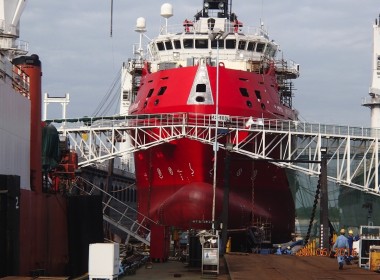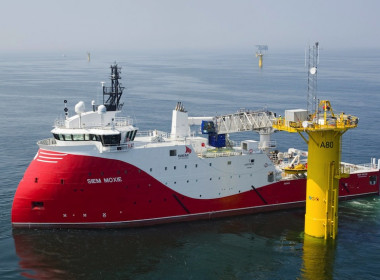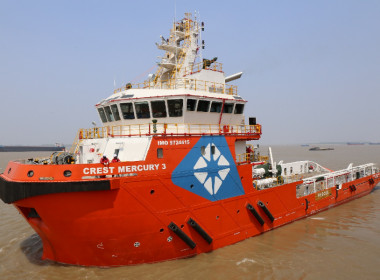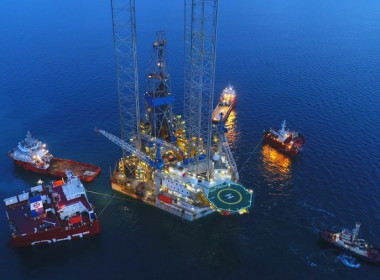COLUMN | Explaining Tidewater’s dip as AD Ports buys ENAV Radiance for US$200 million [Offshore Accounts]

Hot on the back of Britoil buying Vroon’s fleet of 30 offshore support vessels (OSVs), and Golden Energy Offshore taking another five from the Dutch owner, last week’s big offshore deal was Abu Dhabi’s AD Ports buying the “eastern fleet” of ENAV.
AD Ports has bought these ten vessels trading in South-East Asia and the Arabian Gulf, leaving ENAV with just five large PSVs working in Mexico and Guyana. These are also advertised for sale by the controlling shareholder, the private equity player Riverstone.
What did AD Ports get for its money?
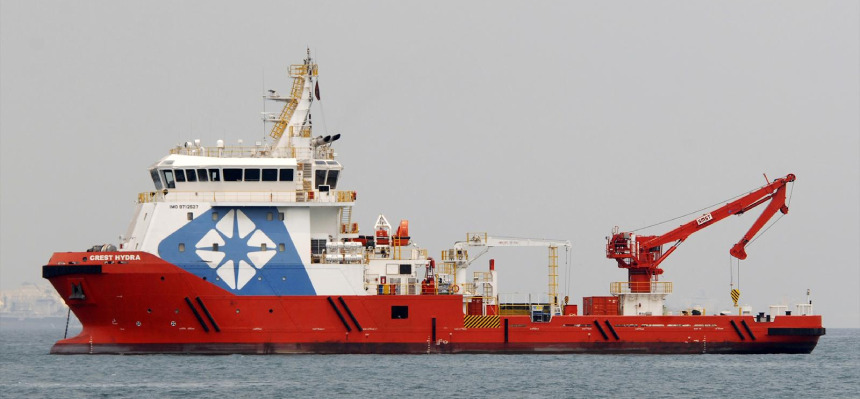
The price paid by the Emirati state-owned company was US$200 million for a fleet that consists of a single 100-tonne bollard pull anchor handling tug supply (AHTS) vessel, four platform supply vessels (PSVs), of which two have clear deck space of 1,000 square metres and two are smaller, one 450-passenger moored accommodation barge, one 239-passenger dynamically positioned (DP) workboat, two 192-passenger DP workboats, chartered mainly in Brunei, and a small 70-metre subsea/air diving vessel, Crest Hydra, currently in Thailand. It is a mixed fleet with some of the prime assets locked into long-term charters on low rates, and others on the spot market.
ENAV originally paid US$200 million to Pacific Radiance’s lenders, headed by Singapore’s state-owned DBS Bank, in November 2021 and acquired its fleet of 33 OSVs. The banks accepted this payment as full and final write-off of the loans secured on the vessels. So ENAV has sold off 23 former Pacific Radiance ships, one by one, piece by piece, most notably two dive support vessels to the Harren Group (Crest Odyssey 1 and 2, now Fire Opal and Trapiche Emerald). It obtained the same price for the remaining ten vessels as it paid for the full 33 in 2021. Nice work, Riverstone!
More deals in the pipeline: ALP, UOS…
This is the latest in a pipeline of deals triggered by the upsurge in industry activity. Soon, we can expect to see the completion of the long-running saga of Hayfin’s efforts to dispose of the twelve 200-tonne bollard pull anchor handlers managed by United Offshore Services in Germany, which it acquired in 2018, as well as apparent efforts by a Dutch marine contractor to acquire ALP, the long-distance towage company, which owns eight high-specification tugs. Maybe Bourbon will also finally be restructured (and maybe Middle Eastern interests will be involved in the recapitalisation). Several other privately held Middle Eastern and South East Asian owners are also being touted for sale by advisers as investor interest in offshore returns.
But the fate of all these deals is driven by the health of the industry, and the industry bellwether is Tidewater, which just reported its third quarter results. How did they look?
Tidewater reports stellar results
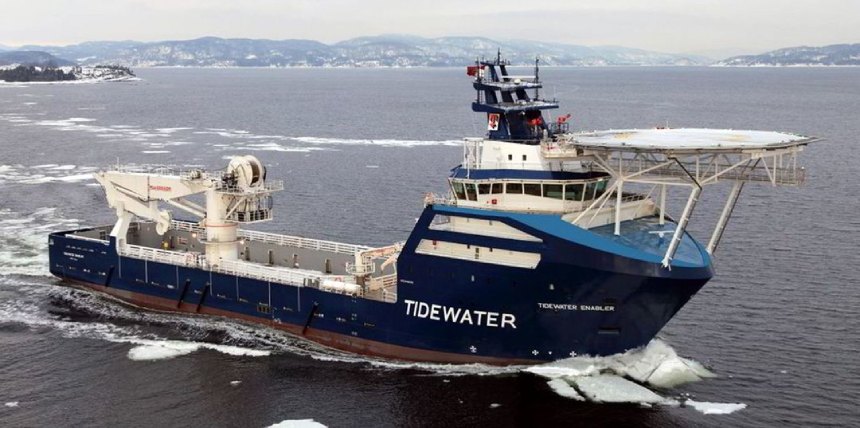
On Tuesday, November 7, the company announced its quarterly results, and the results were strong.
The company is the undisputed leader in the OSV industry, having restructured from Chapter Eleven, which wiped its debt. It has taken its fleet to around 220 vessels despite scrapping over a hundred ships. This was achieved by merging with Gulfmark, absorbing Swire Pacific Offshore’s fleet of fifty ships in 2022, and recently paying US$577 million for 37 high specification, mainly North Sea PSVs from Solstad, of which 32 had been integrated into Tidewater in the last quarter.
Revenue for the period from July to September was US$299 million, a 39 per cent increase from the second quarter of 2023. The average day rate across the entire fleet of over two hundred ships increased to US$17,865 per day, US$1,823 higher than in the second quarter of 2023. This was by any measure a decent result.
Future outlook is strong
Everything went right and everything also points to a stronger 2024 with what the company described as its “composite leading edge term contract day rate”, which we understand to be largely the charter rate for large PSVs internationally, was up 22 per cent to US$28,609.
Net income was higher at US$26 million, an increase of US$3.6 million from the second quarter of 2023, and indeed in the first quarter of the year, the company was only making net income of US$10 million. Tidewater advised investors that it expected 2024 record revenue of around US$1.4 billion, with gross margins forecast to come in at 52 per cent.
Oh! Tidewater also announced that it had authority to buy back its own shares up to the maximum permissible amount under existing debt agreements, something usually beloved by investors. How did the market receive this excellent news?
Market hated results, Tidewater shares slumped
The market hated the news, and Tidewater shares were dumped, falling 12 per cent on the day the results were announced, to finish the week down 14 per cent at US$60 per share on Friday night. WTF?
Some of the jitters come from the fact that Tidewater was priced for perfection, with the shares up 84 per cent year on year from November 2022. Other jitters come from a generally weaker oil price, with crude prices at US$80 per barrel at the time of writing, when many analysts had been predicting US$100 at the year-end after the Saudi Arabian production cuts.
Then there was the talk of the “mid-cycle pause,” which seemed to suggest that oil companies were slowing down their rate of contracting for rigs and new drilling projects. This view that perhaps some of the sizzle had gone out of the offshore market was reinforced by Transocean’s quarterly loss. No, I don’t understand how a company with a pre-eminent position in deepwater drilling and a fleet of 39 ultra deepwater rigs can still be losing money at this stage in the up-cycle, but Transocean did report a net loss of US$220 million, a deterioration from the loss of US$165 million in the prior quarter. Transocean shares are down 20 per cent since the end of September, but up over 50 per cent for the year to date.
Room for improvement – don’t panic!
There are three reasons why Tidewater should do better in 2024. and why the company’s earnings have still not peaked. What are they?
- Momentum, Momentum, Momentum
Firstly, there is the simple fact of momentum. The company, like most OSV owners, has lots of vessels locked into low rates in contracts fixed in 2021 or before. It has only been twenty months since charter rates went from “recovering” after Covid to “stratospheric” after the Russian invasion of Ukraine.
When the purchase of the 37 Solstad PSVs was announced, the small print on page seven showed that around half of the PSVs were locked into dreadful rates that would only complete at the end of next year or earlier. What wasn’t stated was how many vessels have cheaply priced options that go beyond the end of 2024 – the first quarter 2022 presentation by Solstad showed that there was around US$50 million in revenue locked in for 2025 and 2026 in total, implying that probably six or seven ships can be extended by their charterers on “peanuts” for several years. Thus, Tidewater still has more juice from the legacy PSVs on long-term charters in 2024.
Double your money, double your day rates
Tidewater’s average day rate for a large DP2 PSV with clear deck space of over 900 square metres in 2021 was US$14,382. Some of the large PSVs that Tidewater purchased from Swire Pacific Offshore were apparently on day rates of around US$10,000 or less when the deal closed. By mid-2023, the company was achieving day rates for the same vessel of US$29,958 on new fixtures, three times the old Swire rates. As more vessels roll off their legacy contracts fixed in the bad times, we can expect Tidewater’s revenue and profits to grow, even if day rates do not move significantly above current levels.
There is an argument to suggest that many customers, especially the large oil majors, are resistant to paying significantly more than US$30,000 for a large PSV on a long-term, multi-year charter and will do everything they can to avoid it. Such oil major ruses include encouraging newbuilds against five-year charters, demanding en bloc discounts for fixing several vessels at once, and finding every contractual mechanism they can to exploit the low, legacy contracts for as long as possible. One large PSV (not from Tidewater, I hasten to add) was reportedly broken down for months, but the French charterers patiently waited for it to be repaired, knowing that if they cancelled the contract, the US$12,000 per day charter rate would be replaced by a US$30,000 per day rate.
However, we can expect Tidewater to continue to fix more of its fleet at those leading-edge rates and to continue to try to raise prices on new fixtures, albeit more gradually than in the great offshore reset of 2022.
- Middle East has to improve, surely?
As we highlighted previously, once again there was one region that bucked Tidewater’s positive story: the Middle East.
Once again Tidewater’s regional results showed stellar returns in West Africa, much improved results in the North Sea and the Mediterranean, and a stronger market in both the Americas and the Asia-Pacific. Once again, the 45 Tidewater vessels working in the Middle East made a loss of US$1.1 million. This was an improvement from the loss of US$1.66 million in the preceding quarter, but at that rate of improvement, it will still be the middle of next year before the Middle East is not losing money. Nearly US$35 million in revenue there generated no operating profit.
How to characterise the Gulf OSV market?
When you think of Tidewater’s Gulf operations, think of a fifth of the company’s fleet as locked into an abusive relationship with a cruel and powerful Arab sheikh who has metaphorically chained the company (and its competitors) to a drainpipe in a dark, dank, and very unprofitable basement.
Eventually this can and should change, but how quickly is not clear. It would only take a few thousand dollars a day on current day rates in the region and Tidewater could be throwing out cash from its Middle Eastern operations just as it does elsewhere. Unfortunately, quarter on quarter Middle Eastern day rates for the Tidewater fleet rose by only US$96 per day per vessel, and rates for several categories of vessels, including large PSVs and medium=sized anchor handlers there, actually dropped. Yes, average rates fell in a market that is supposed to be sizzling and were lower than in 2022 for large PSVs and large AHTS.
When and if that meaningful improvement in the Gulf will actually happen is a mystery. The glacial improvement in aggregate day rates quarter on quarter this year might give cause for concern, but also it highlights an opportunity if (and that is a big “if”) the company can materially raise day rates, or if it can move vessels from the Middle East to areas like South-East Asia, where clients are willing to pay premium rates.
It’s about time Tidewater took a leaf out of Cher’s book and asked, “What am I supposed to do, sit around and wait for you” (to pay decent market rates)? Do you believe the higher rates in the Gulf?
Is it the state-owned players again?
The presence of so many state-owned players like P&O Maritime, Halul Offshore, and indeed AD Ports, and ADNOC L&S suggests that local vested interests may work hard to suppress profitability for OSV owners in the region for a long time. But even after the acquisition of ENAV Radiance by AD Ports, and even after the acquisition of both Zamil Marine and Allianz Marine Services by ADNOC L&S, there must come a point when the long and long approach of the captive owners beholden to their state oil companies finally run out of vessels.
Or Tidewater turns seller, CEO Quintin Kneen flogs all 45 Middle Eastern vessels to them, and walks away with, say, half a billion dollars to redistribute to his grateful shareholders, a premium price to let the locals continue to keep the 45 ships barefoot and bedraggled in Abu Dhabi and Saudi Arabia’s offshore equivalent of The Shining.
- Weak anchor handlers are an opportunity
Tidewater’s CEO has done a great job of raising utilisation and day rates for PSVs. In fact, large PSVs were on a utilisation of 90 per cent and medium-sized ones at 87 per cent in the third quarter. Given the need for vessels to undergo maintenance and dockings and to mobilise between contracts, it is going to be hard to improve much on that utilisation, so future improvements can come purely from day rate increases and contract resets.
But for all the success in the PSV market, much work and much opportunity remain in the anchor handling market. Tidewater operates a total of 58 AHTS, as opposed to 69 mid-sized PSVs and 70 large PSVs, but this 30 per cent of the fleet underperformed badly in the third quarter. Eleven are large anchor handlers of 16,000bhp (11,931kW) or greater, 21 are in the 8,000bhp (5,965kW) to 16,000bhp range, and 26 are smaller than 8,000 bhp.
Lower utilisation at just 70 per cent
Across all three categories of AHTS, utilisation has slumped year on year, most markedly for the largest ships, where the utilisation of Tidewater’s 200-tonne bollard pull and larger AHTS fell from 94 per cent to 70 per cent. Average day rates in this segment did rise year on year, from US$21,415 to US$26,293, but not enough to counteract the fall in utilisation.
The anchor handlers under 16,000bhp showed utilisation of around 80 per cent, again down from 85 per cent a year ago, but also with modestly rising day rates. This poor performance of the large AHTS fleet suggests that Hayfin may struggle to achieve the pricing it desires for the UOS vessels.
Problems are opportunities
So, as with the Middle East, you can see this weak utilisation of Tidewater’s anchor handlers as an opportunity. There is still room to grow and improve both AHTS utilisation and day rates – and half of Tidewater’s fleet of small AHTS are trading in that market, so the two problems or opportunities are connected. Given the higher capital cost of building a large anchor handler compared to a large PSV, one might expect rates for this category to eventually surpass large PSV rates. In the last peak of 2013, large AHTS were fixed on term charters higher than US$40,000 per day.
Conclusion: Don’t worry, be happy
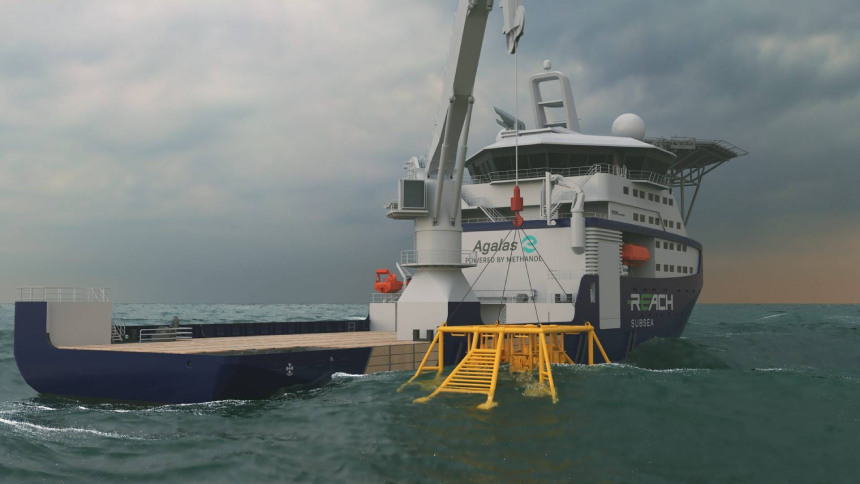
Tidewater has executed very well in the recovery, and the OSV industry orderbook remains low, although we can expect more abandoned vessels to emerge from China and to see more Asian newbuildings. Reach Subsea confirmed it would be chartering the first newbuild subsea IMR vessel from Agalas last week, showing that there is demand for newbuild tonnage on long-term charters at reasonable rates, even for delivery in 2026.
Tidewater continues to drive the industry’s charter rates higher, and with Bourbon and Edison Chouest in disarray, it is hard to see its pre-eminence being challenged for some time. However, its recent results show that no matter how well you do, sometimes markets are just too optimistic.
Being priced for perfection can be a problem, but all indicators suggest that in terms of profitability and cashflow, there is still room for improvement for Tidewater in 2024 and probably 2025, which is positive for the whole industry.
Background reading
AD Ports’ existing fleet homepage is here. The company recently flipped the 2018-built, 86-metre-long Safeen Prince (former Prince Jameson) to ADNOC L&S in August.
We covered the acquisition of Pacific Radiance by ENAV in November 2021 with an earlier flag of the transaction in July 2021. When the company was sold to ENAV, it laboured under the burden of US$397 million in bank debt and US$76 million in unpaid notes, with US$69 million in accrued interest and US$441 million in accumulated losses at the end of 2020.
Earlier efforts by Pacific Radiance to resolve its debts through a sale to Allianz Marine Offshore Services of the UAE failed in early 2020.
We covered the consolidation of the Arabian Gulf rig and vessel markets by captive state-owned players in March 2021. AD Ports buying ENAV Radiance is just the latest in a string of deals to remove competition from those markets.


